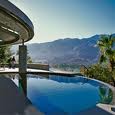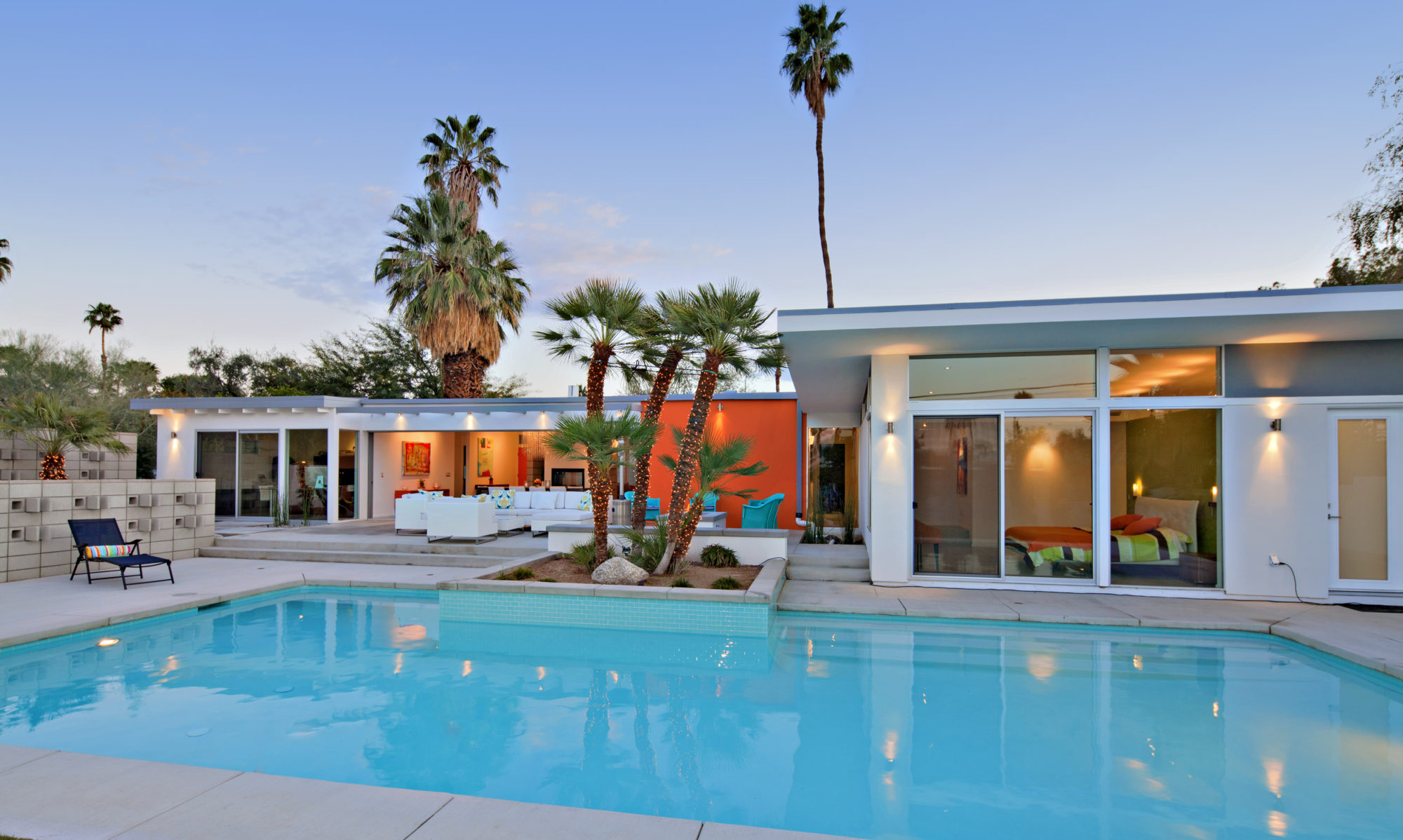 Architect John Lautner’s Elrod House Now On the Market
Architect John Lautner’s Elrod House Now On the Market
Architect John Lautner’s iconic Arthur Elrod House (www.johnlautner.org) is back on the market with a price tag of more than $13 million.
The late architect, renowned for his organic structures, composed this amazing home carved into the rugged Southridge foothills overlooking Palm Springs in 1968. The house has been featured extensively in lifestyle, architecture and design magazine articles (www.palmspringslife.com/Palm-Springs-Life/February-2009/Daring-Design) and is best known as the James Bond bachelor pad in Diamonds are Forever. It is one of three buildings in Palm Springs by Lautner: Bob and Dolores Hope’s “space ship” domed home also on Southridge (1979) and the Desert Hot Springs Motel (1947).
The Elrod house contains many Lautner hallmarks: a difficult site, harsh environment, modest entrance that conceals soaring space, and rooms that conversely move between indoors and out. The 8,901-square foot house possesses a daring Mid-Century design and breathtaking vistas.
Designed to shield dwellers from the intense desert sun, its enormous domed concrete roof rests on curved walls providing an interior pavilion with a wraparound view of the mountains, city and desert below. Wedge-like sections in the roof lift to accommodate skylights and provide indirect light. Retractable glass walls open the room to the elements.
Natural boulders are exposed in the living room while the tip of an indoor-outdoor swimming pool emanates from the interior to nearly fill a massive curved deck. The pool provides a cooling, ever changing reflection of sky and nearly “disappears” over the side of the deck. Lautner, in fact, is credited for creating Los Angeles’ first “vanishing edge” or infinity pool, built for a private residence in the Silver Lake area in 1957 (www.poolandpatio.about.com).
The main floor includes a kitchen hidden from the circular living room by a long, curved wall. On the same level, the master bedroom features a bar and refrigerator tucked behind walls of exotic wood with carefully matched grains. A sunken master bath tub is exposed to the outside with only a glass wall in between boulders and row of bamboo shoots, adding privacy to the already remote site.
A guest house and servants quarters, added after the main house was built, are reached via a spiral staircase from the pool deck.
The house is being sold along with two other properties in the Southridge development, owned and cared for by a real estate investor who admired the house a year before buying it in 2003.
The current owner bought the house from supermarket magnet Ron Burkle, who had poured millions into the house during the years he owned it, according to a Palm Springs Life feature by Allison Engle (February, 2009).
“I give Burkle full marks,” said the owner in the 2009 PSL article. “He did all the thankless stuff you never see, basically renovating all the mechanical systems and furnishing it in a manner that’s true to the space.”
“You’ll never find this site again. You’ll never get the approvals again. And you had true simpatico between the client (Eldrod), architect (Lautner) and contractor — something impossible count on and critical to the best results,” he said.
The owner’s two other properties create an unusual portfolio of architecturally significant homes: the former Steve McQueen house designed by Hugh Kaptur and the “Boat House” designed by Michael P. Johnson for race-car driver James Jeffords (www.la.curbed.com/tags/elrod-house).
In keeping with their intent as unique dwelling places, the properties have been made available to friends, family, business associates and special occasions over the years. Most recently they are for rent only to members of the Southridge Club; membership is $100,000 annually (www.la.curbed.com/tags/elrod-house).
Palm Springs is a virtual treasure trove of Mid-Century Modern architecture with one of the largest and best preserved examples of elegant homes and landmark buildings constructed during the 1940s through 1960s (www.architecture.about.com). While Lautner’s style is considered Desert Modernism and Googie (his iconic Googie coffee shop on LA’s Sunset Boulevard), other architectural styles from that era in Palm Springs include Art Moderne, Spanish Eclectic, and Tiki.
An apprentice to Frank Lloyd Wright, Lautner’s subsequent fascination with new shapes and structures may have caused him to be overlooked or miscast as an Atomic Age futurist or celebrating Hollywood excess during his lifetime. After he died in 1994, his original designs began to receive serious attention and recognition.
In a foreword to a book that accompanied a retrospective exhibition of Lautner’s work at the Hammer Museum in Los Angeles in July, 2008, Museum Director Ann Philbin wrote that Lautner’s vision “came from his determination to humanize the spaces of the built world and create an endlessly varied organic poetry. This was a profoundly serious agenda.”
The Hammer Museum’s John Lautner retrospective was at the Palm Springs Desert Museum this past spring.
Pamela Bieri
